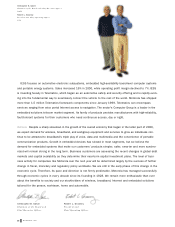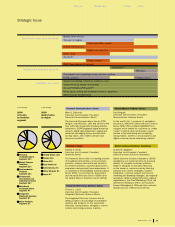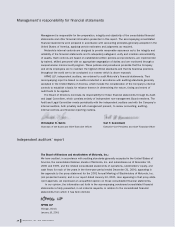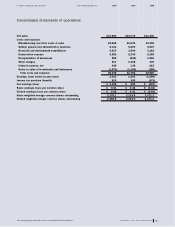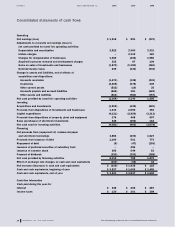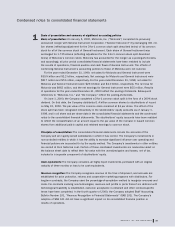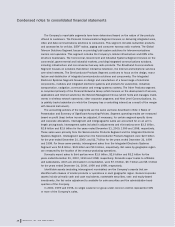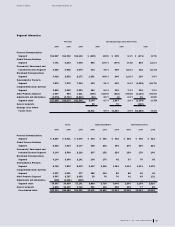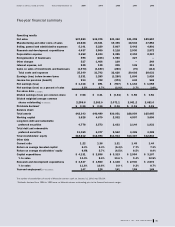Motorola 2000 Annual Report Download - page 30
Download and view the complete annual report
Please find page 30 of the 2000 Motorola annual report below. You can navigate through the pages in the report by either clicking on the pages listed below, or by using the keyword search tool below to find specific information within the annual report.
28 MOTOROLA, INC. AND SUBSIDIARIES
Condensed notes to consolidated financial statements
The Company’s reportable segments have been determined based on the nature of the products
offered to customers. The Personal Communications Segment focuses on delivering integrated voice,
video and data communications solutions to consumers. This segment includes subscriber products
and accessories for cellular, iDEN®radios, paging and consumer two-way radio markets. The Global
Telecom Solutions Segment focuses on providing total system solutions for telecommunications
carriers and operators. This segment includes the Company’s cellular infrastructure and iDEN infra-
structure businesses. The Commercial, Government and Industrial Systems Segment focuses on the
commercial, governmental and industrial markets, providing integrated communications solutions,
including infrastructure and non-consumer two-way radio products. The Broadband Communications
Segment focuses on solutions that deliver interactive television, the Internet and telephone services
over wired networks. The Semiconductor Products Segment continues to focus on the design, manu-
facture and distribution of integrated semiconductor solutions and components. The Integrated
Electronic Systems Segment focuses on design and manufacture of a broad range of electronic
components, modules and integrated electronic systems and products for automotive, industrial,
transportation, navigation, communication and energy systems markets. The Other Products segment
is comprised primarily of the Personal Networks Group (which focuses on the development of servers,
applications and Internet solutions); the Network Management Group (which holds and manages invest-
ments in wireless network operators); other corporate programs; and Next Level Communications, Inc.
(a publicly traded subsidiary in which the Company has a controlling interest as a result of the merger
with General Instrument).
The accounting policies of the segments are the same as those described in Note 1 Basis of
Presentation and Summary of Significant Accounting Policies. Segment operating results are measured
based on profit (loss) before income tax adjusted, if necessary, for certain segment-specific items
and corporate allocations. Intersegment and intergeographic sales are accounted for on an arm’s
length pricing basis. Intersegment sales included in adjustments and eliminations were $3.3 billion,
$2.8 billion and $2.9 billion for the years ended December 31, 2000, 1999 and 1998, respectively.
These sales were primarily from the Semiconductor Products Segment and the Integrated Electronic
Systems Segment. Intersegment sales from the Semiconductor Products Segment were $2.0 billion
for the year ended December 31, 2000, and $1.7 billion for the years ended December 31, 1999
and 1998. For these same periods, intersegment sales from the Integrated Electronic Systems
Segment were $0.8 billion, $0.8 billion and $0.9 billion, respectively. Net sales by geographic region
are measured by the location of the revenue-producing operations.
Domestic export sales to third parties were $1.9 billion, $2.6 billion and $3.2 billion for the
years ended December 31, 2000, 1999 and 1998, respectively. Domestic export sales to affiliates
and subsidiaries, which are eliminated in consolidation, were $7.3 billion, $6.7 billion and $5.1 billion
for the years ended December 31, 2000, 1999 and 1998, respectively.
Identifiable assets (excluding intersegment receivables) are the Company’s assets that are
identified with classes of similar products or operations in each geographic region. General corporate
assets include primarily cash and cash equivalents, marketable securities, cost- and equity-based
investments, the fair value adjustment to available for sale securities and the administrative head-
quarters of the Company.
In 2000, 1999 and 1998, no single customer or group under common control represented 10%
or more of the Company’s sales.


